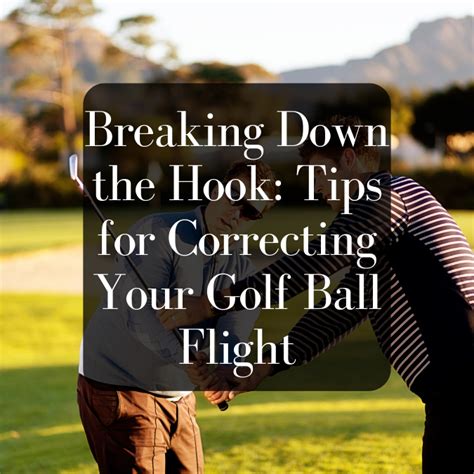Master the Golf Hook: Improve Your Game Instantly
The dreaded golf hook. That sudden, sharp leftward curve (for right-handed golfers) that sends your ball veering wildly off course, leaving you frustrated and scrambling for recovery. But what if I told you mastering the hook, rather than fearing it, could significantly improve your overall game? It's true! Understanding the mechanics behind a hook opens the door to greater control, consistency, and ultimately, lower scores. This comprehensive guide will unravel the mysteries of the golf hook, teaching you how to control it and even use it strategically to your advantage.
Understanding the Mechanics of a Hook
A hook is caused by a combination of factors, primarily involving the clubface, swing path, and grip. Let's break down each element:
-
Closed Clubface: This is the most common culprit. A closed clubface means the face is pointing to the left of your target line at impact. This imparts sidespin on the ball, causing it to curve sharply to the left.
-
In-to-Out Swing Path: An in-to-out swing path, where the clubhead moves from inside the target line to across the target line, further exacerbates the hook. This, combined with a closed clubface, creates a powerful leftward curve.
-
Strong Grip: A grip that's too strong (where your hands are rotated too far to the left) can also contribute to a closed clubface and an in-to-out swing path, thus promoting a hook.
How to Control a Hook (and Maybe Even Use It!)
While a runaway hook is undesirable, understanding its components allows you to control it. The key is to subtly adjust your swing to counteract the factors causing the hook.
1. Open Your Stance Slightly:
Try widening your stance slightly, and opening it up towards your target. This subtle adjustment can help encourage a more outside-to-inside swing path, combating the in-to-out motion that fuels the hook.
2. Adjust Your Grip:
A slightly weaker grip can help alleviate the closed clubface issue. Experiment with your grip pressure and hand placement until you find a position that feels comfortable and promotes a more neutral clubface at impact.
3. Focus on Your Swing Path:
Consciously work on swinging the club from outside to inside the target line. This helps square the clubface at impact, reducing the amount of sidespin imparted on the ball.
4. Practice Your Alignment:
Proper alignment is crucial for controlling your shots. Ensure your feet, hips, and shoulders are aligned correctly to your target before each swing. This will help you maintain a consistent swing path and prevent hooks caused by poor alignment.
Why Learning to Hook Can Actually Improve Your Game
While most golfers aim to avoid hooks, learning to control one can be a valuable asset. Understanding how to manipulate your swing path and clubface allows for more creative shot-making. A well-executed hook can be a useful tool for shaping shots around obstacles or cutting off distance when needed.
Troubleshooting: Common Questions About Golf Hooks
Here are some frequently asked questions about golf hooks, answered to help you further understand and conquer this challenging aspect of golf:
What Causes a Sudden Hook?
A sudden hook, often unexpected, might stem from a subconscious change in your grip, stance, or swing path. It can also be a result of a change in course conditions (like wind) or even just mental fatigue. Pay close attention to your technique and body mechanics to pinpoint the cause.
How Can I Fix a Hook After a Long Break from Golf?
Getting back into golf after a break often reveals flaws that were previously masked. Focus on fundamentals: grip, posture, stance, and swing path. Consider taking a few lessons to reassess your technique and rebuild consistency.
Why Am I Hooking My Driver More Than My Irons?
Drivers are inherently more susceptible to hooks due to their greater clubhead speed and higher loft. Pay closer attention to your alignment, swing path, and grip pressure when hitting your driver to maintain control.
How Can I Prevent a Hook Using Different Clubs?
The principles remain the same regardless of the club. Focus on maintaining a neutral clubface and a consistent swing path with each club. Adjust your grip and stance slightly as needed for different club lengths and lofts.
Mastering the hook isn't about eliminating it completely; it's about understanding its causes and learning to control it. By working on these key areas – grip, swing path, and clubface – you'll gain a deeper understanding of your swing and significantly enhance your golfing capabilities. Practice diligently, and you'll soon find that the dreaded hook can transform from a nemesis into a valuable tool in your golfing arsenal.

